Salvatore Rinzivillo
ISTI CNR
Explanation User Interfaces: A Systematic Literature Review
May 26, 2025Abstract:Artificial Intelligence (AI) is one of the major technological advancements of this century, bearing incredible potential for users through AI-powered applications and tools in numerous domains. Being often black-box (i.e., its decision-making process is unintelligible), developers typically resort to eXplainable Artificial Intelligence (XAI) techniques to interpret the behaviour of AI models to produce systems that are transparent, fair, reliable, and trustworthy. However, presenting explanations to the user is not trivial and is often left as a secondary aspect of the system's design process, leading to AI systems that are not useful to end-users. This paper presents a Systematic Literature Review on Explanation User Interfaces (XUIs) to gain a deeper understanding of the solutions and design guidelines employed in the academic literature to effectively present explanations to users. To improve the contribution and real-world impact of this survey, we also present a framework for Human-cEnteRed developMent of Explainable user interfaceS (HERMES) to guide practitioners and academics in the design and evaluation of XUIs.
Explainable AI in Time-Sensitive Scenarios: Prefetched Offline Explanation Model
Mar 06, 2025Abstract:As predictive machine learning models become increasingly adopted and advanced, their role has evolved from merely predicting outcomes to actively shaping them. This evolution has underscored the importance of Trustworthy AI, highlighting the necessity to extend our focus beyond mere accuracy and toward a comprehensive understanding of these models' behaviors within the specific contexts of their applications. To further progress in explainability, we introduce Poem, Prefetched Offline Explanation Model, a model-agnostic, local explainability algorithm for image data. The algorithm generates exemplars, counterexemplars and saliency maps to provide quick and effective explanations suitable for time-sensitive scenarios. Leveraging an existing local algorithm, \poem{} infers factual and counterfactual rules from data to create illustrative examples and opposite scenarios with an enhanced stability by design. A novel mechanism then matches incoming test points with an explanation base and produces diverse exemplars, informative saliency maps and believable counterexemplars. Experimental results indicate that Poem outperforms its predecessor Abele in speed and ability to generate more nuanced and varied exemplars alongside more insightful saliency maps and valuable counterexemplars.
One-Shot Clustering for Federated Learning
Mar 06, 2025Abstract:Federated Learning (FL) is a widespread and well adopted paradigm of decentralized learning that allows training one model from multiple sources without the need to directly transfer data between participating clients. Since its inception in 2015, it has been divided into numerous sub-fields that deal with application-specific issues, be it data heterogeneity or resource allocation. One such sub-field, Clustered Federated Learning (CFL), is dealing with the problem of clustering the population of clients into separate cohorts to deliver personalized models. Although few remarkable works have been published in this domain, the problem is still largely unexplored, as its basic assumption and settings are slightly different from standard FL. In this work, we present One-Shot Clustered Federated Learning (OCFL), a clustering-agnostic algorithm that can automatically detect the earliest suitable moment for clustering. Our algorithm is based on the computation of cosine similarity between gradients of the clients and a temperature measure that detects when the federated model starts to converge. We empirically evaluate our methodology by testing various one-shot clustering algorithms for over thirty different tasks on three benchmark datasets. Our experiments showcase the good performance of our approach when used to perform CFL in an automated manner without the need to adjust hyperparameters.
Fiper: a Visual-based Explanation Combining Rules and Feature Importance
Apr 25, 2024Abstract:Artificial Intelligence algorithms have now become pervasive in multiple high-stakes domains. However, their internal logic can be obscure to humans. Explainable Artificial Intelligence aims to design tools and techniques to illustrate the predictions of the so-called black-box algorithms. The Human-Computer Interaction community has long stressed the need for a more user-centered approach to Explainable AI. This approach can benefit from research in user interface, user experience, and visual analytics. This paper proposes a visual-based method to illustrate rules paired with feature importance. A user study with 15 participants was conducted comparing our visual method with the original output of the algorithm and textual representation to test its effectiveness with users.
On some Foundational Aspects of Human-Centered Artificial Intelligence
Dec 29, 2021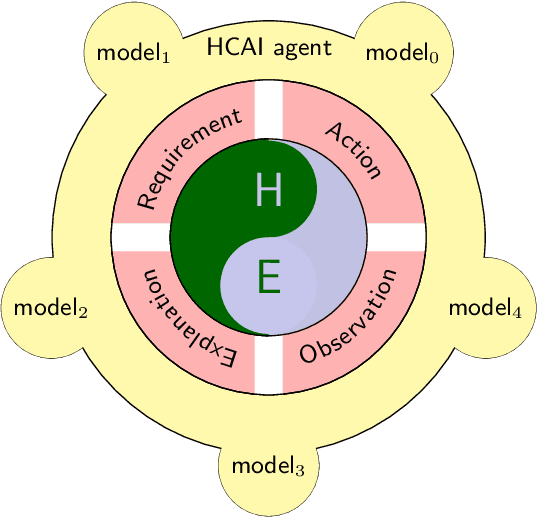
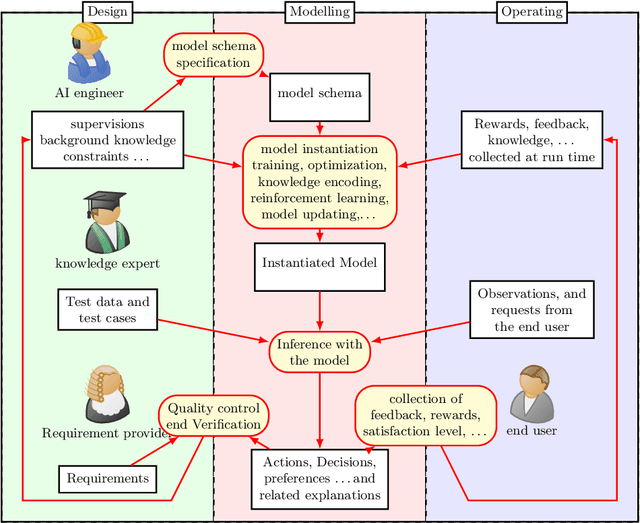
Abstract:The burgeoning of AI has prompted recommendations that AI techniques should be "human-centered". However, there is no clear definition of what is meant by Human Centered Artificial Intelligence, or for short, HCAI. This paper aims to improve this situation by addressing some foundational aspects of HCAI. To do so, we introduce the term HCAI agent to refer to any physical or software computational agent equipped with AI components and that interacts and/or collaborates with humans. This article identifies five main conceptual components that participate in an HCAI agent: Observations, Requirements, Actions, Explanations and Models. We see the notion of HCAI agent, together with its components and functions, as a way to bridge the technical and non-technical discussions on human-centered AI. In this paper, we focus our analysis on scenarios consisting of a single agent operating in dynamic environments in presence of humans.
Explainable Deep Image Classifiers for Skin Lesion Diagnosis
Nov 22, 2021

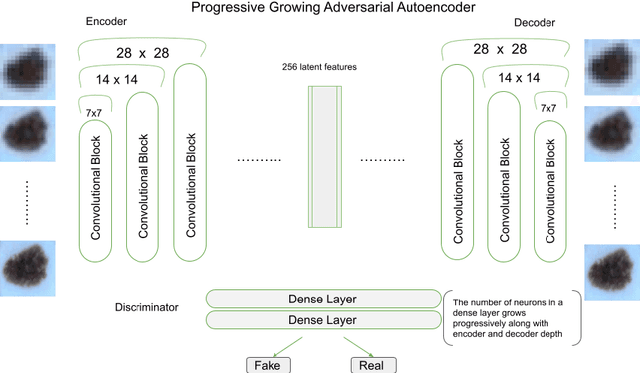
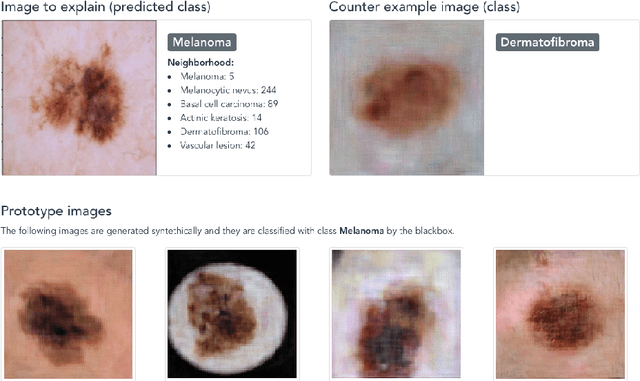
Abstract:A key issue in critical contexts such as medical diagnosis is the interpretability of the deep learning models adopted in decision-making systems. Research in eXplainable Artificial Intelligence (XAI) is trying to solve this issue. However, often XAI approaches are only tested on generalist classifier and do not represent realistic problems such as those of medical diagnosis. In this paper, we analyze a case study on skin lesion images where we customize an existing XAI approach for explaining a deep learning model able to recognize different types of skin lesions. The explanation is formed by synthetic exemplar and counter-exemplar images of skin lesion and offers the practitioner a way to highlight the crucial traits responsible for the classification decision. A survey conducted with domain experts, beginners and unskilled people proof that the usage of explanations increases the trust and confidence in the automatic decision system. Also, an analysis of the latent space adopted by the explainer unveils that some of the most frequent skin lesion classes are distinctly separated. This phenomenon could derive from the intrinsic characteristics of each class and, hopefully, can provide support in the resolution of the most frequent misclassifications by human experts.
Benchmarking and Survey of Explanation Methods for Black Box Models
Feb 25, 2021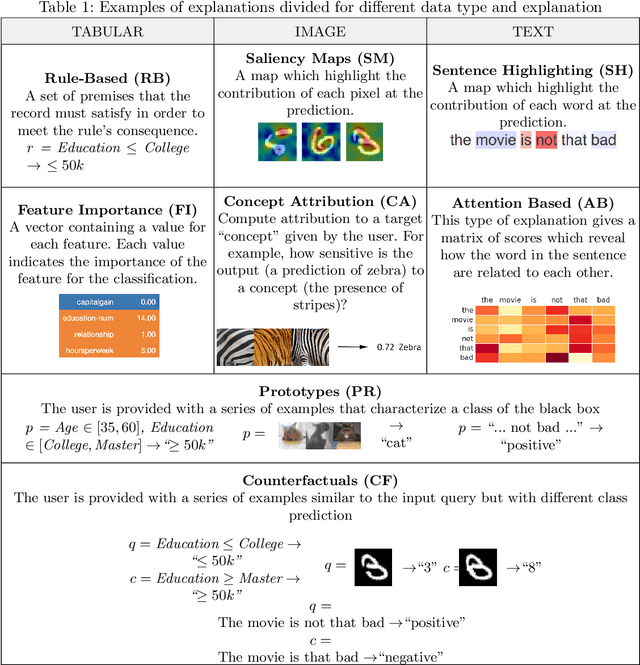

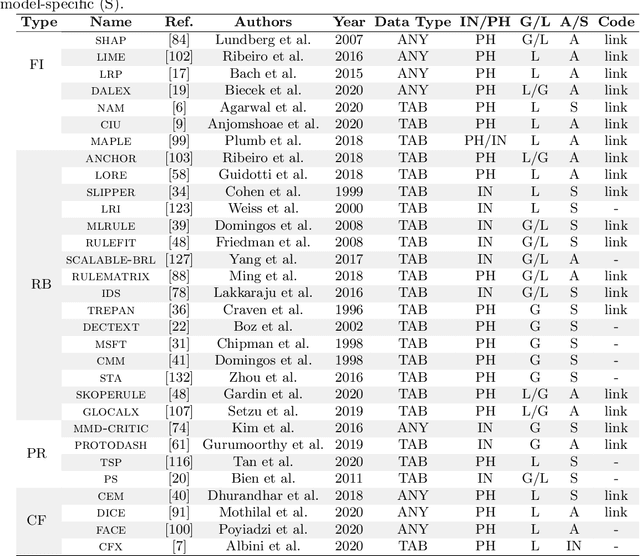
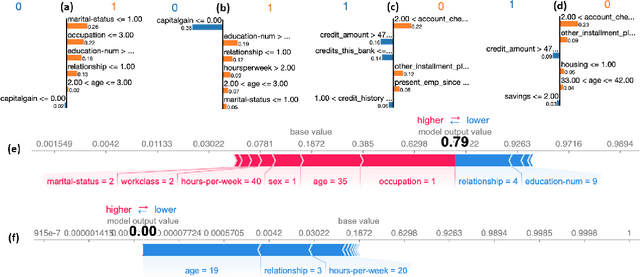
Abstract:The widespread adoption of black-box models in Artificial Intelligence has enhanced the need for explanation methods to reveal how these obscure models reach specific decisions. Retrieving explanations is fundamental to unveil possible biases and to resolve practical or ethical issues. Nowadays, the literature is full of methods with different explanations. We provide a categorization of explanation methods based on the type of explanation returned. We present the most recent and widely used explainers, and we show a visual comparison among explanations and a quantitative benchmarking.
Predicting seasonal influenza using supermarket retail records
Dec 17, 2020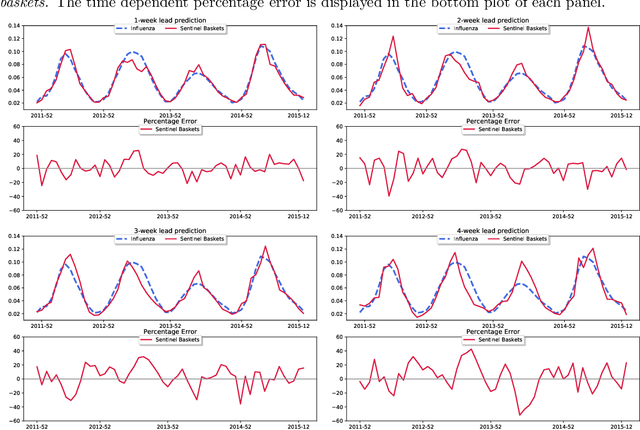



Abstract:Increased availability of epidemiological data, novel digital data streams, and the rise of powerful machine learning approaches have generated a surge of research activity on real-time epidemic forecast systems. In this paper, we propose the use of a novel data source, namely retail market data to improve seasonal influenza forecasting. Specifically, we consider supermarket retail data as a proxy signal for influenza, through the identification of sentinel baskets, i.e., products bought together by a population of selected customers. We develop a nowcasting and forecasting framework that provides estimates for influenza incidence in Italy up to 4 weeks ahead. We make use of the Support Vector Regression (SVR) model to produce the predictions of seasonal flu incidence. Our predictions outperform both a baseline autoregressive model and a second baseline based on product purchases. The results show quantitatively the value of incorporating retail market data in forecasting models, acting as a proxy that can be used for the real-time analysis of epidemics.
 Add to Chrome
Add to Chrome Add to Firefox
Add to Firefox Add to Edge
Add to Edge